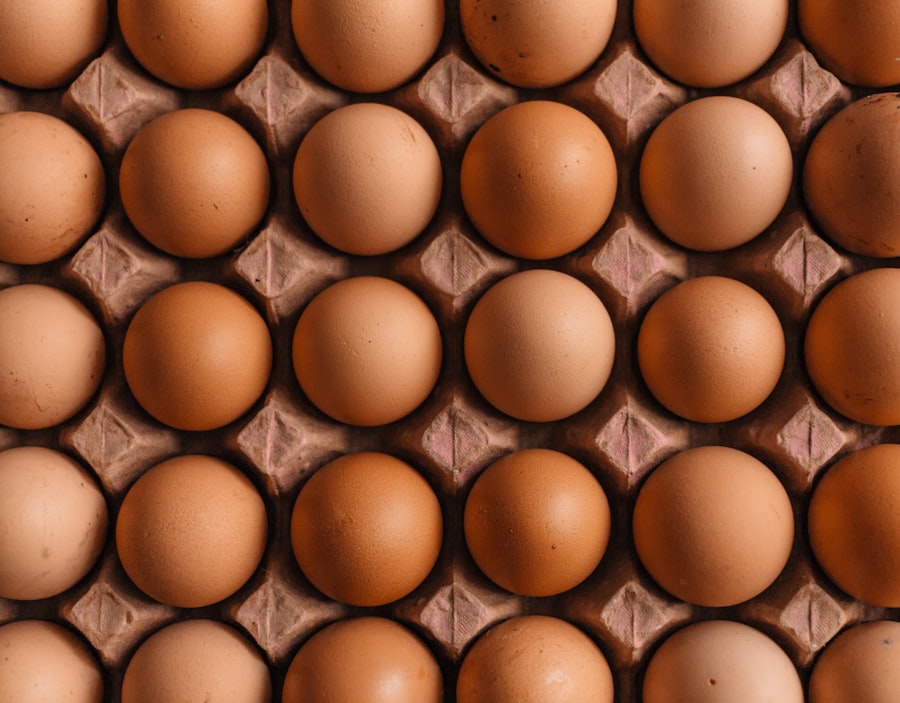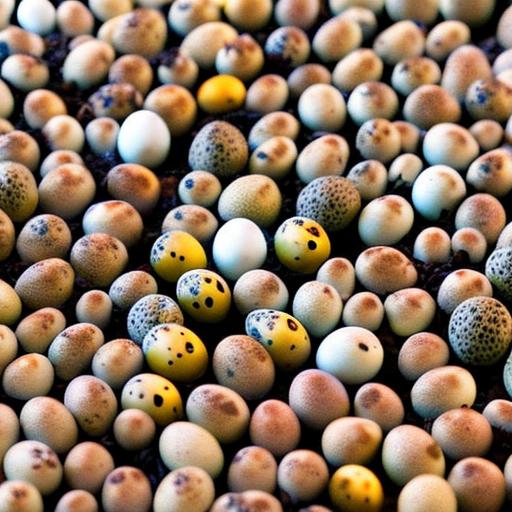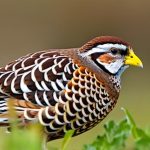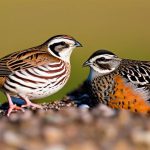When it comes to hatching quail eggs, it is crucial to keep the newly hatched chicks in the incubator for a period of time. This is important for several reasons. Firstly, the incubator provides a controlled environment that is essential for the chicks’ survival during their early stages of life. The temperature and humidity levels in the incubator are carefully regulated to mimic the conditions under a mother quail, ensuring that the chicks stay warm and comfortable. Additionally, the incubator provides a safe and secure space for the chicks, protecting them from potential predators or other threats that they may encounter in an outdoor environment.
Furthermore, keeping the quail chicks in the incubator after hatch allows them to fully dry off and fluff up. This process is crucial for their health and well-being, as it helps them regulate their body temperature and stay warm. Additionally, the incubator provides a stable environment for the chicks to rest and recover from the hatching process. It also gives them time to adjust to their new surroundings before being introduced to a brooder or outdoor environment. Overall, keeping quail chicks in the incubator after hatch is essential for their survival and sets them up for a healthy start to life.
Key Takeaways
- Keeping quail eggs in the incubator after hatch is important for maintaining optimal temperature and humidity levels for the chicks’ survival and development.
- Monitoring the quail chicks’ health and behavior is crucial for identifying any signs of illness or distress early on.
- Providing proper nutrition and water for quail chicks is essential for their growth and overall well-being.
- Gradually transitioning quail chicks to a brooder or outdoor environment helps them adapt to their new surroundings and reduces stress.
- Cleaning and maintaining the incubator is necessary to prevent the spread of diseases and ensure a healthy environment for the quail chicks.
- Ensuring proper temperature and humidity levels in the incubator is vital for the quail chicks’ growth and development.
- Observing the quail chicks’ growth and development allows for adjustments in their care and ensures they are reaching their milestones.
Monitoring the Quail Chicks’ Health and Behavior
After hatching, it is important to closely monitor the health and behavior of the quail chicks. This involves observing their activity levels, eating and drinking habits, as well as their overall appearance. Healthy quail chicks should be active, alert, and moving around the incubator. They should also be eating and drinking regularly, which indicates that they are getting the nutrition and hydration they need to thrive. Additionally, their feathers should be clean and dry, and they should have a good body condition with no signs of illness or distress.
It is also important to watch out for any abnormal behavior or symptoms of illness in the quail chicks. This includes lethargy, labored breathing, abnormal droppings, or any signs of injury. If any of these symptoms are observed, it is crucial to take immediate action to address the issue and ensure the health and well-being of the chicks. Regular monitoring of the quail chicks’ health and behavior is essential for early detection of any potential problems and allows for prompt intervention to prevent any health issues from escalating.
Providing Proper Nutrition and Water for Quail Chicks
Proper nutrition and hydration are essential for the growth and development of quail chicks. After hatching, it is important to provide them with a balanced diet that meets their nutritional needs. This can be achieved by offering commercial quail starter feed, which is specially formulated to provide the essential nutrients that young quail require for healthy growth. Additionally, it is important to ensure that the feed is finely ground or crumbled to make it easier for the chicks to consume.
In addition to a balanced diet, access to clean and fresh water is crucial for quail chicks. It is important to provide them with a shallow water dish that is easily accessible and prevents the chicks from drowning. Regularly checking and refilling the water dish is essential to ensure that the chicks have an adequate supply of water at all times. Proper hydration is essential for their overall health and well-being, as it helps regulate their body temperature and supports their growth and development.
Gradual Transition to Brooder or Outdoor Environment
As the quail chicks grow and develop in the incubator, it is important to plan for their gradual transition to a brooder or outdoor environment. This transition should be carefully managed to ensure that the chicks are able to adapt to their new surroundings without experiencing any stress or health issues. One way to facilitate this transition is by gradually lowering the temperature in the incubator over a period of time to acclimate the chicks to cooler temperatures.
Once the quail chicks are ready to leave the incubator, they can be moved to a brooder that provides a warm and safe environment for them to continue growing. The brooder should be equipped with a heat source, such as a heat lamp or heating pad, to maintain the appropriate temperature for the chicks. Additionally, providing them with bedding material, such as pine shavings or paper towels, can help keep them warm and comfortable as they adjust to their new surroundings.
After spending some time in the brooder, the quail chicks can eventually be introduced to an outdoor environment, such as a coop or pen. This transition should be done gradually, allowing the chicks to become familiar with their new surroundings while still providing them with access to warmth and protection from predators. By carefully managing the transition from the incubator to a brooder and eventually an outdoor environment, you can ensure that the quail chicks have a smooth adjustment and continue to thrive as they grow.
Cleaning and Maintaining the Incubator
Proper cleaning and maintenance of the incubator are essential for creating a healthy environment for hatching quail eggs and raising quail chicks. Regular cleaning helps prevent the buildup of bacteria and pathogens that can be harmful to the eggs and chicks. After each hatch, it is important to thoroughly clean and disinfect the incubator using a mild detergent and a disinfectant solution. This helps remove any residue or debris from the previous hatch and ensures that the environment is clean and sanitary for the next batch of eggs.
In addition to regular cleaning, it is important to maintain the functionality of the incubator by checking its components regularly. This includes monitoring the temperature and humidity levels, as well as ensuring that the ventilation system is working properly. Regularly calibrating and adjusting these settings as needed helps create an optimal environment for hatching eggs and raising healthy quail chicks.
Ensuring Proper Temperature and Humidity Levels

Maintaining proper temperature and humidity levels in the incubator is crucial for successful hatching of quail eggs and raising healthy quail chicks. The temperature inside the incubator should be carefully regulated according to the specific requirements of quail eggs, which typically range between 99.5-100 degrees Fahrenheit. Consistently monitoring and adjusting the temperature as needed helps create an optimal environment for embryo development and hatching.
Similarly, maintaining appropriate humidity levels is essential for ensuring successful hatching of quail eggs. The humidity inside the incubator should be carefully controlled throughout the incubation period, with specific adjustments made during different stages of development. This helps prevent dehydration of the eggs and ensures that the chicks are able to hatch successfully.
Observing Quail Chicks’ Growth and Development
As quail chicks continue to grow and develop in their new environment, it is important to observe their progress closely. This involves monitoring their growth rate, feather development, and overall health status. Healthy quail chicks should exhibit steady growth, with noticeable changes in their size and appearance over time. Additionally, their feathers should start to develop as they mature, eventually replacing their downy fluff with adult plumage.
Regularly observing the quail chicks’ growth and development also allows for early detection of any potential health issues or developmental abnormalities. This includes monitoring their behavior, activity levels, and overall appearance for any signs of illness or distress. By staying vigilant and attentive to their progress, you can ensure that any issues are addressed promptly, allowing the quail chicks to continue growing into healthy adults.
In conclusion, raising quail chicks from hatching through their early stages of life requires careful attention to various aspects of their care. From keeping them in the incubator after hatch to monitoring their health and behavior, providing proper nutrition and water, facilitating a gradual transition to a brooder or outdoor environment, cleaning and maintaining the incubator, ensuring proper temperature and humidity levels, and observing their growth and development – each step plays a crucial role in setting up the quail chicks for a healthy start in life. By following these guidelines and staying attentive to their needs, you can ensure that your quail chicks thrive and grow into healthy adults.
If you’re wondering how long to keep quail eggs in the incubator after hatching, it’s important to understand the specific needs of quail chicks. Once they have hatched, it’s generally recommended to leave them in the incubator for about 24-48 hours to allow them to dry off and gain strength before moving them to a brooder. For more information on egg-laying birds, such as geese, you might find this article on how many eggs geese lay helpful in understanding the breeding habits of different poultry species.
FAQs
How long should quail eggs stay in the incubator after hatching?
Quail eggs should remain in the incubator for about 24-48 hours after hatching to allow the newly hatched chicks to dry off and fluff up.
Why is it important to leave quail eggs in the incubator after hatching?
Leaving quail eggs in the incubator after hatching allows the chicks to fully dry off, fluff up, and gain strength before being moved to a brooder.
What should be the temperature and humidity in the incubator during this period?
The temperature in the incubator should be maintained at around 95-100°F (35-37.8°C) and the humidity should be around 60-70% during this period.
What should be the setup in the incubator for the newly hatched quail chicks?
The incubator should have a clean, dry surface for the chicks to move around on. It’s also important to provide a source of heat, such as a heat lamp, to keep the chicks warm.
Can the quail chicks be left in the incubator for longer than 48 hours?
It is not recommended to leave the quail chicks in the incubator for longer than 48 hours as they will need to be moved to a brooder to receive proper care and nutrition.
Meet Walter, the feathered-friend fanatic of Florida! Nestled in the sunshine state, Walter struts through life with his feathered companions, clucking his way to happiness. With a coop that’s fancier than a five-star hotel, he’s the Don Juan of the chicken world. When he’s not teaching his hens to do the cha-cha, you’ll find him in a heated debate with his prized rooster, Sir Clucks-a-Lot. Walter’s poultry passion is no yolk; he’s the sunny-side-up guy you never knew you needed in your flock of friends!







